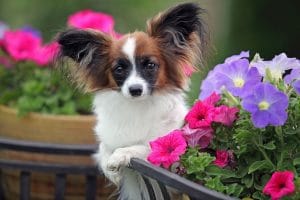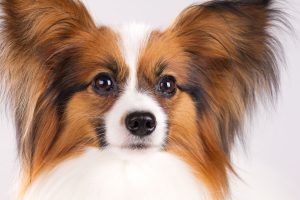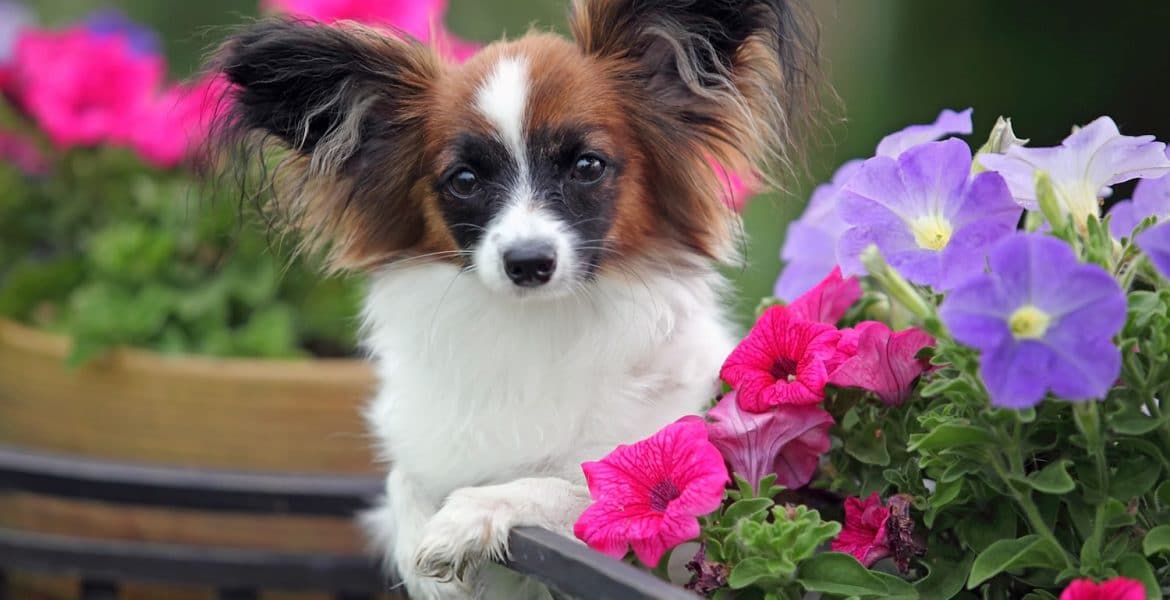 The name Papillon is derived from the French word meaning butterfly. The name is attributed to the long haired ears that are shaped like butterfly wings. The breed is also sometimes known as the Continental Toy Spaniel.
The name Papillon is derived from the French word meaning butterfly. The name is attributed to the long haired ears that are shaped like butterfly wings. The breed is also sometimes known as the Continental Toy Spaniel.
The breed history dates back to early toy spaniels of the 13th to 15th centuries and are depicted in paintings and church frescos of that time. A favourite of European royalty and high society, one story suggests that Marie Antoinette walked to the guillotine clutching her small dog under her arms, a toy spaniel that had been brought to the French Court from Spain on the back of pack mules. According to the story, her toy spaniel was spared and cared for in a building in Paris still called the Papillon House today.
This is a small dog with the distinct feature of large erect ears that have long dangling hair that gives the overall shape of butterfly wings. There is also a variation of the breed known as the Phalène which has drooping spaniel like ears. The Phalene was the original form of the breed which later became the Papillon in the 16th century. Most Kennel Clubs today recognise both as a single breed under the name Papillon. They have a single coat of long fine fur that is silky and soft to the touch. The tail is a long plume that arches over the back and to the sides.
Papillons are full of personality and energy. They’re lively and athletic for their size as well as being very intelligent. Although they’re not considered yappy dogs, they do have strong territorial instincts with a tendency to bark at any noise they hear which may cause a problem for apartment living. Papillons are easily trained to perform tricks and excel at agility training and competition. They are a good family dog and gentle with children as long as children are taught to be gentle with them. However, they’re not recommended for families with small children as young Papillons can be very fragile.
 Grooming needs consist mainly of daily brushing and combing as the dogs do a good job cleaning themselves and do not have a particular odour. Shedding is moderate. Papillons do not need a vast amount of exercise, a daily walk will suffice as will play around the house or the garden.
Grooming needs consist mainly of daily brushing and combing as the dogs do a good job cleaning themselves and do not have a particular odour. Shedding is moderate. Papillons do not need a vast amount of exercise, a daily walk will suffice as will play around the house or the garden.
A Papillon should be around 20 to 28 centimetres high. There is no weight specified in the breed standard but Papillons tend to weigh around 1.8 and 3.1 kilograms.
The breed standard requires that Papillons be parti-coloured. Ideally they should be white with coloured markings, which includes a mask of colour covering both eyes. It is preferred that they have a blaze of white between the eyes and a white noseband to give the ideal butterfly look. All white Papillons are not accepted in shows, neither are those without white colouring.
Papillons are generally very healthy little dogs with a lifespan of around 12 to 15 years. There are few health problems that they are susceptible to but the ones that may affect them include patellar luxation (loose kneecaps), a soft spot (fontanel) on the skull and eye problems.


